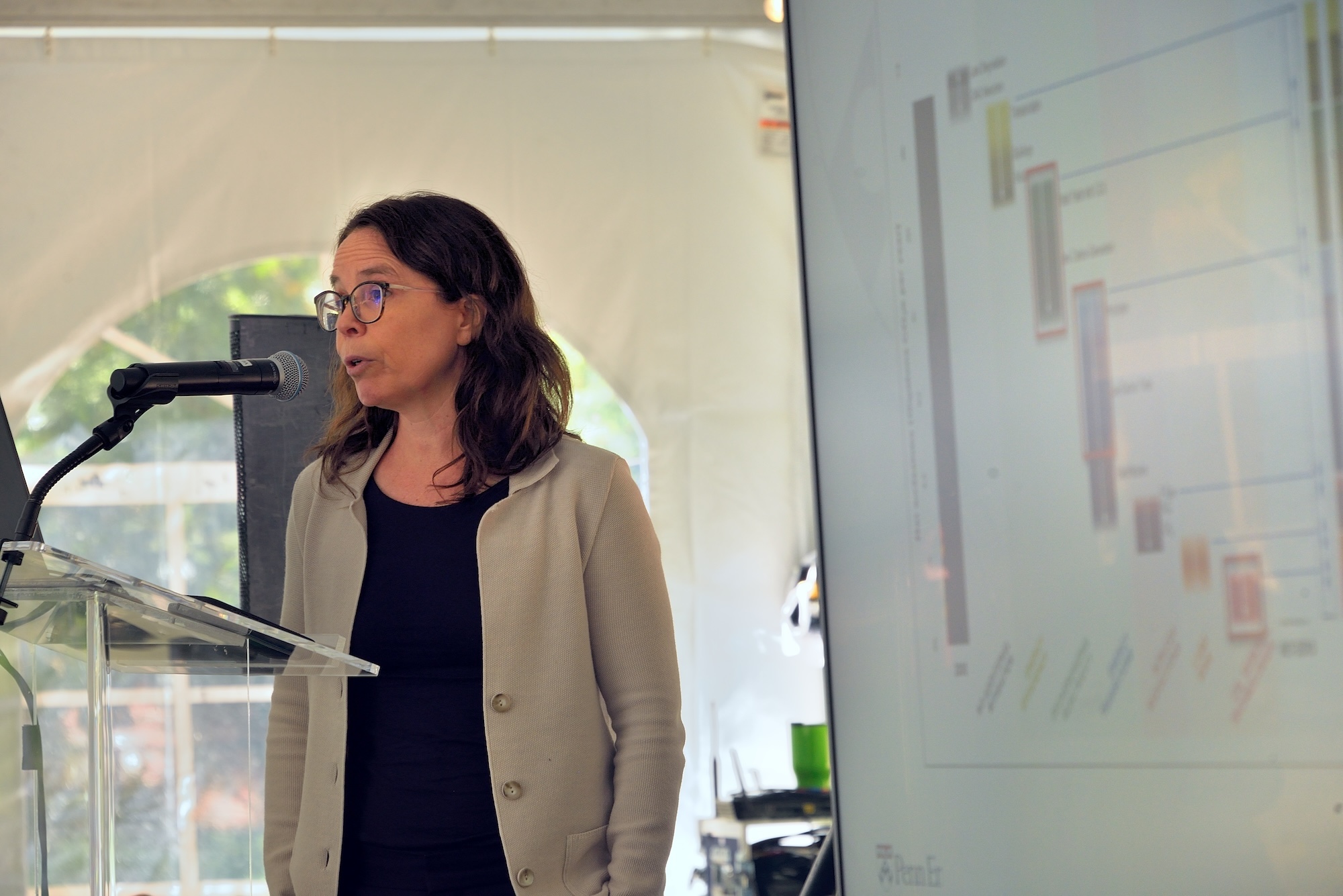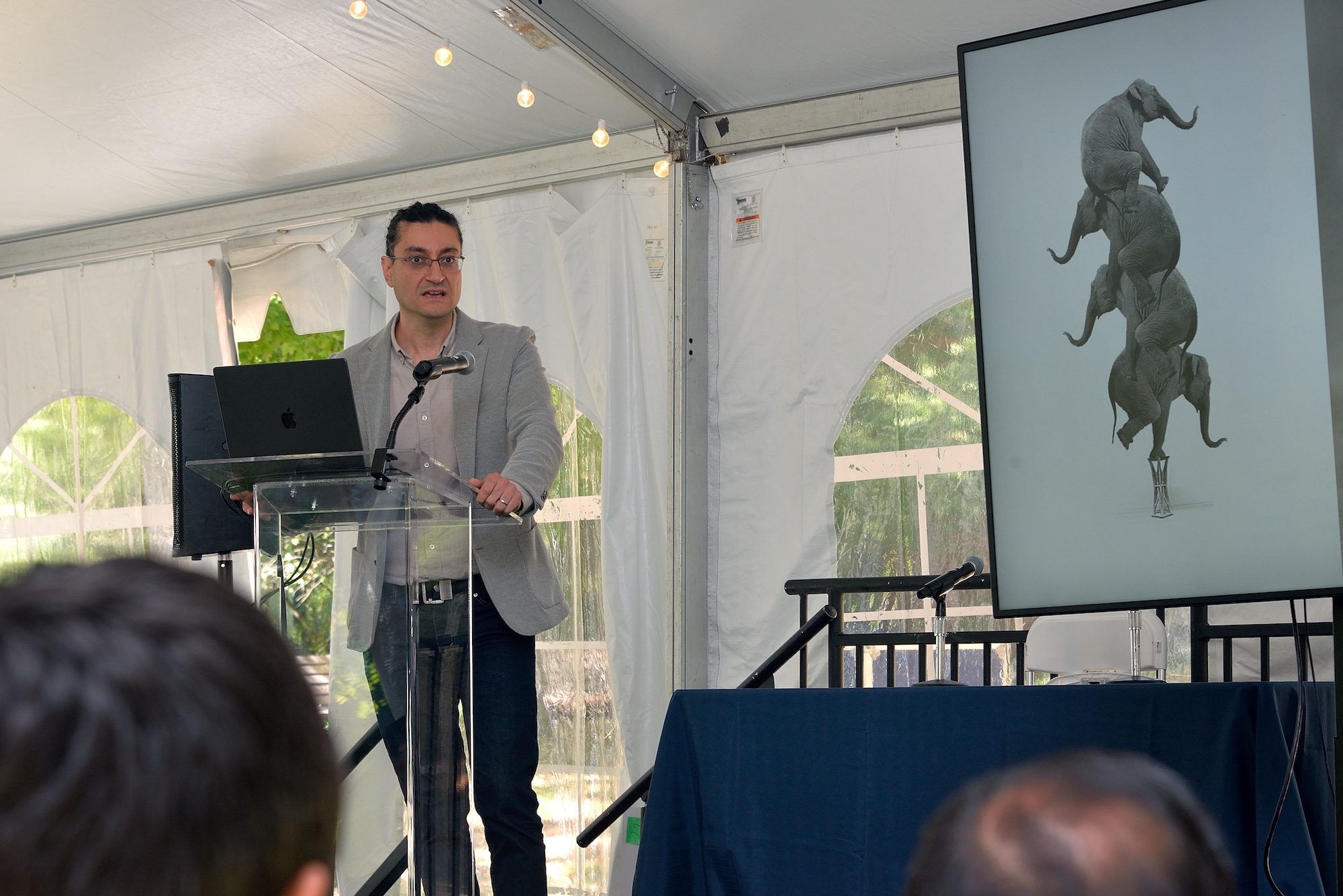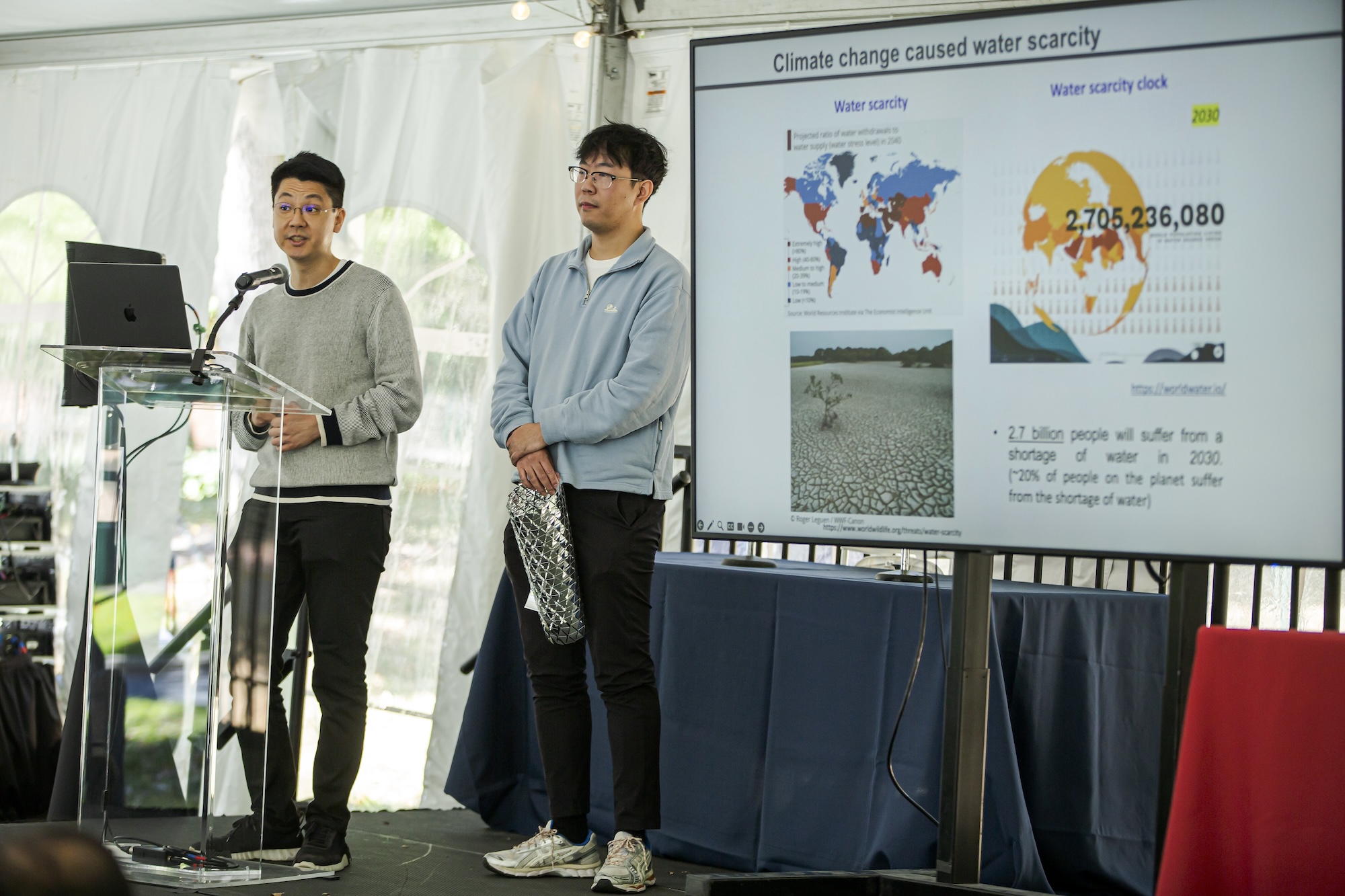This article was written by Nathi Magubane for Penn Today.
As society grapples with the impacts of a worsening climate—from the increased frequency and intensity of extreme weather events to rising sea levels and deadly heat waves—the need for actionable solutions has never been greater, Penn researchers say.
At a Climate Week event, Penn’s Climate Solutions Showcase, faculty and researchers from the School of Engineering and Applied Science and Weitzman School of Design presented innovative strategies to combat the causes and effects of climate change. From reducing carbon emissions to designing sustainable infrastructure, the event highlighted how Penn experts are at the forefront of creating a more resilient and sustainable future.
Kicking off the session, Jen Wilcox, the Presidential Distinguished Professor of Chemical Engineering and Energy Policy and a leading expert in carbon capture, discussed comprehensive decarbonization strategies. She said that to meet net-zero goals, “we no longer have the luxury of just avoiding emissions. We have to actively remove CO2 from the atmosphere.”

She explained that, while decarbonizing the energy sector has made strides, hard-to-abate sectors like cement and steel require new solutions. “We have to think beyond emissions avoidance,” she said, stressing the need to actively remove CO2 from the atmosphere through innovative techniques.
Wilcox’s Clean Energy Conversions Lab focuses on leveraging industrial waste byproducts to absorb CO2, a process that not only reduces atmospheric carbon but also transforms waste into usable building materials like synthetic aggregates. A key aspect of their work involves developing enrichment and separation processes, a fundamental part of chemical engineering, to extract alkalinity—magnesium and calcium—from waste feedstocks, which are then used to react with CO2 and permanently store it in construction materials.
Dorit Aviv, assistant professor of architecture in the Weitzman School, presented her research on sustainable cooling systems designed to combat the deadly heat island effect in urban areas. In collaboration with Penn Engineering and the School of Nursing, Aviv has developed solar-powered urban cooling shelters that provide relief from extreme heat without relying on air conditioning.

“We need sustainable and resilient cooling solutions that do not depend on fossil fuels,” she said, describing her use of radiant cooling panels that were tested in North Philadelphia last summer. Aviv’s work focuses on developing equitable cooling systems deployed in underserved neighborhoods that suffer from extreme heat exposure due to lack of greenery and infrastructure.
Masoud Akbarzadeh, associate professor of architecture, emphasized the collaborative nature of his work with Aviv and others. “Together, we’re addressing both structural efficiency and thermal advantages,” he said. His research focuses on reducing the carbon footprint of the construction industry, which he highlighted as a significant contributor to global emissions.

Akbarzadeh said his research seeks to “reduce construction material while maintaining structural performance,” noting that his method mimics natural structures by placing material only where needed. This strategy is rooted in polyhedral structural designs and can reduce embodied energy by as much as 60%, he said, dramatically cutting the environmental impact of construction projects.
Tying into the materials science focus shared by Akbarzadeh’s Polyhedral Structures Lab, Yinding Chi and Yunchan Lee, both postdoctoral researchers in the Shu Yang Group, presented their work on kirigami-based water-harvesting technologies.
“We’re working to harness atmospheric moisture, an underutilized resource, which can provide up to eight times more fresh water than rivers,” Lee said. Their approach utilizes kirigami structures—engineered to create vortices that enhance water condensation on surfaces—and hybrid desiccant materials, which significantly increase dehumidification efficiency.

Chi elaborated on their application of this technology, noting that, “when combined with scalable heat exchangers, these materials not only collect water but also reduce energy consumption in industrial processes like wood drying.”
Doug Jerolmack, a professor with appointments in the Department of Earth and Environmental Science at the School of Arts & Sciences and Mechanical Engineering and Applied Mechanics at Penn Engineering, closed out the event by discussing the unavoidable impacts of climate change, such as landslides and permafrost thaw. He highlighted how climate change is causing landscapes to deteriorate at an accelerating rate. “The landscape is literally unraveling beneath our feet,” he said.
Jerolmack’s work focuses on predicting and mitigating these impacts, particularly in vulnerable areas like coastal deltas and regions prone to landslides. “We’re locked into at least 30 more years of things getting worse,” Jerolmack said, explaining the importance of planning for the consequences. His team is developing robots that can assess soil stability to predict landslides, offering a proactive way to address the destabilizing effects of climate change before disaster strikes.
He ended his presentation with a call to action, urging students and other researchers to get involved. “The people standing in front of you today want to harness your intellect and your skills to direct them toward solving these problems,” he said, inviting the next generation to take part in shaping climate solutions.

